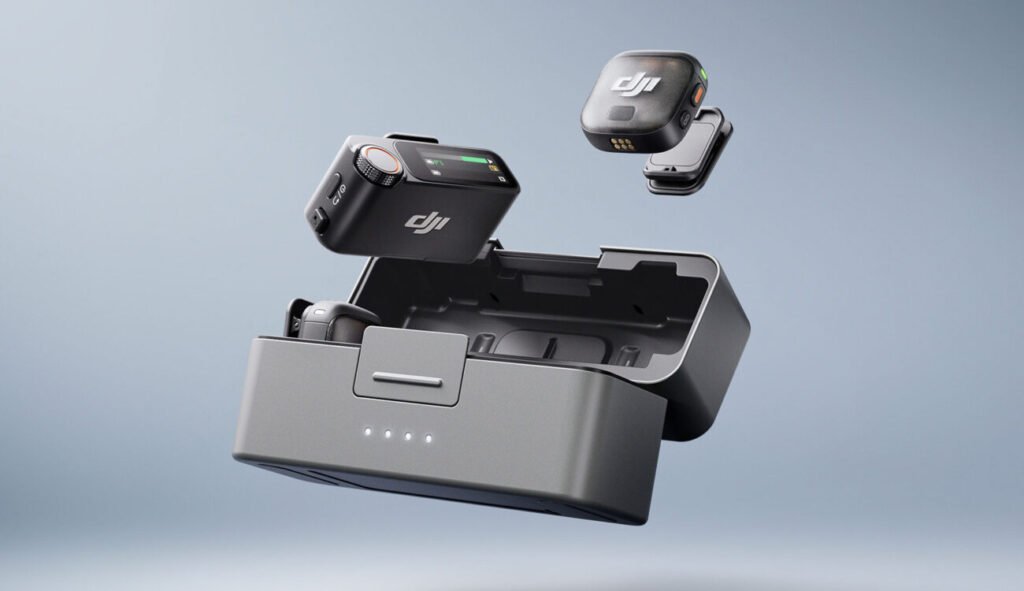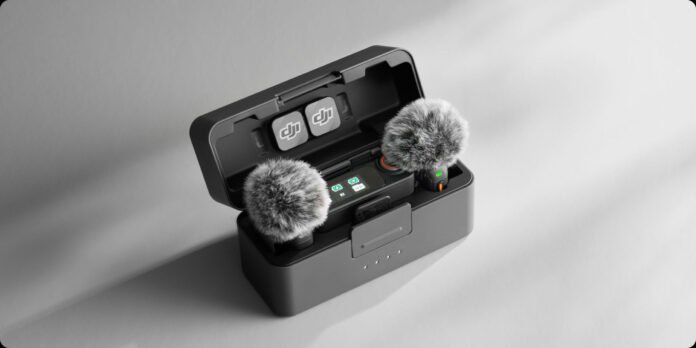In 2025, the demand for best wireless microphones for YouTubers, vloggers, and filmmakers has exploded. Clear audio is no longer optional — it is a must-have for professional content. DJI, known for its cameras and drones, has also been improving its audio solutions. After the success of DJI Mic 2, the company has now launched the DJI Mic 3, a product that claims to combine lightweight design, 32-bit float recording, adaptive gain control, and professional timecode support in one package.
If you’re searching for “DJI Mic 3 full review,” “DJI Mic 3 vs Rode Wireless Pro,” or “best wireless mic for YouTube in 2025”, this article covers every detail you need before buying.
Design and Build Quality – Compact but Professional
The DJI Mic 3 design is one of its biggest strengths. Each transmitter weighs just 16 grams, making it among the smallest wireless mic transmitters in the market. With its magnetic clip system, creators can hide the mic under clothing without ruining the shot.

The receiver features a bright 1.1-inch AMOLED screen and a quick dial for fast settings adjustments. The new charging case is not only compact but also organizes clips, magnets, and windscreens neatly. It offers 2.4 full recharges, meaning the DJI Mic 3 can last for an entire shoot day.
👉 Many reviewers already call it the best compact wireless mic for vloggers due to its size and portability.
Audio Quality – 32-Bit Float Recording for Professionals
The audio quality of DJI Mic 3 is where it really stands out.
- Supports 48 kHz recording with both 24-bit and 32-bit float modes.
- 32-bit float recording ensures that even in loud concerts or outdoor environments, the audio won’t clip.
- Omnidirectional capsule captures natural and clear sound, handling up to 130 dB SPL.
With two-level noise cancellation, adaptive gain control, low-cut filter at 100 Hz, and voice tone presets, the Mic 3 is ready for any situation.
If you’re looking up “Does DJI Mic 3 have good audio quality?” or “DJI Mic 3 sound test”, the answer is simple: it is designed for professional creators who want studio-grade sound in a pocket mic.
Wireless Range and Performance – Stable Even in Crowded Areas
The DJI Mic 3 wireless range has been upgraded with dual-band transmission (2.4 GHz + 5.x GHz).
- Line-of-sight range: up to 400 meters.
- In high-interference environments: around 80 meters stable range.
- Lossless digital transmission with frequency hopping to avoid dropouts.
For wedding filmmakers, travel vloggers, and live streamers, this makes the DJI Mic 3 one of the best long-range wireless microphones in 2025.
Storage and Backup – Never Lose Audio Again
Each transmitter has 32 GB internal memory, which can store:
- 57 hours of 24-bit audio, or
- 43 hours of 32-bit float audio.
This makes the DJI Mic 3 a reliable backup recorder. Even if the wireless signal drops, the mic stores the audio safely inside the transmitter.
Many people search for “Does DJI Mic 3 have internal recording?” — the answer is yes, and it’s a big reason creators are switching from other brands.
Battery Life – Made for Long Shooting Days
Battery life is another strong point.
- Transmitters: 8 hours per charge.
- Receiver: 10 hours per charge.
- Charging case: adds 2.4 recharges, making a total of around 28 hours of use.
For professional shoots, you can easily cover an entire day without worrying about recharging.
If you Google “How long does DJI Mic 3 last?”, the short answer is: nearly a full day of recording with the case.
Timecode and Multicam Support – A Professional Upgrade
One of the pro features of DJI Mic 3 is timecode sync.
- Supports LTC in/out (via 3.5mm TRS) and Audio-TC via USB-C.
- Frame rates: 23.98/24/25/29.97/30/50/60 fps.
- Sync accuracy: less than one frame drift in 24 hours.
This makes the DJI Mic 3 a serious competitor to RØDE Wireless Pro, especially for documentary filmmakers and multi-camera productions.
If your query is “Does DJI Mic 3 support timecode?”, the answer is yes — and it’s one of its biggest selling points.
DJI Mic 3 vs DJI Mic 2 vs RØDE Wireless Pro
| Feature | DJI Mic 2 | DJI Mic 3 | RØDE Wireless Pro |
|---|---|---|---|
| Weight per TX | 30g | 16g | 30g |
| Recording | 24-bit only | 24-bit & 32-bit float | 32-bit float |
| Internal Storage | 8 GB | 32 GB | 32 GB |
| Wireless Range | 250m | 400m | 260m |
| Safety Track | Yes | No | Yes |
| Timecode | No | Yes | Yes |
| Lavalier Input | Yes | No | Yes |
From this comparison, the DJI Mic 3 is the best choice for creators who want portability + timecode, while RØDE still wins for lav inputs and safety track.
What’s Missing in DJI Mic 3?
- No 3.5mm lavalier input on the transmitter.
- No traditional Safety Track (-6 dB).
- Availability is limited in some regions (not officially launched everywhere).
So, if you search “Should I buy DJI Mic 3 or RØDE Wireless Pro?”, the answer depends on your workflow. If you need lav support and safety track, go RØDE. If you want the smallest, smartest, and most portable mic with timecode, go DJI.
Final Verdict – Is DJI Mic 3 Worth It?
The DJI Mic 3 is one of the most advanced compact wireless microphones in 2025. It combines lightweight design, 32-bit float audio, adaptive gain, long-range wireless, and pro-level timecode sync into one system.
For YouTubers, vloggers, wedding filmmakers, podcasters, and documentary creators, it’s a near-perfect solution.
If you were asking “Is DJI Mic 3 good for YouTube?”, the answer is: absolutely YES — it’s one of the best wireless microphones for content creators today.

